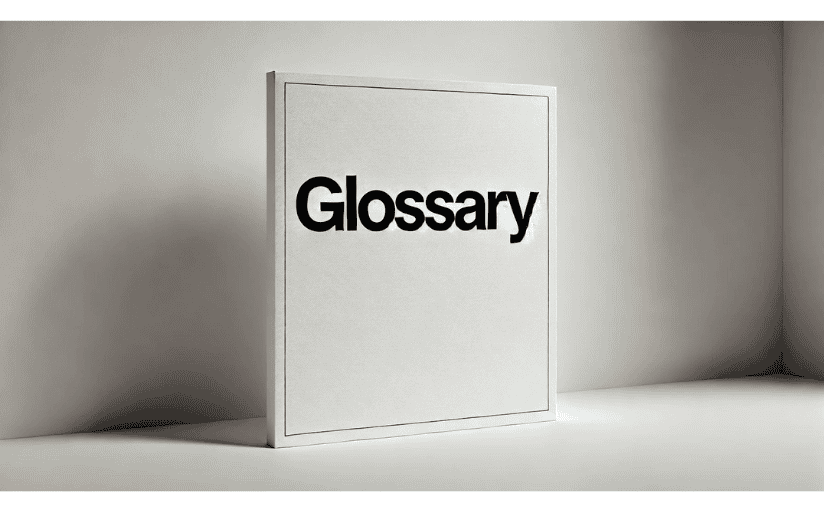Whether you’re writing a report for school or work, it is bound to include words the average reader won’t know the meaning of. Including a glossary at the end of your report ensures that everyone who reads the report has all the information they need to comprehend what you’ve written. You’ll need to know how to write a glossary for a report, and we’re here to help.
(If you make a purchase using the links in this post, we may earn a commission.)
Is There a Glossary Definition?
It’s best to start at the very beginning when learning how to write your glossary: What is the glossary definition? Also known as a “clavis” or “vocabulary,” a glossary lists terms that are included within a report for the purpose of defining those terms. Basically, a glossary is a mini dictionary at the end of your report.

Why Should You Learn How To Write a Glossary for a Report?
It’s important that you understand the basics of writing a glossary for a report so you can grow as a writer and so your audience understands exactly what you’re trying to convey.
If you’re using industry jargon in your report, you’ll want to add that technical terminology to your glossary so that your readers better understand what you’re referring to. It is also a good idea to include commonly confused words, abbreviations and acronyms in your glossary to ensure that your report is easy to understand.
How Do You Write a Glossary?
If you’re now wondering, “How do you write a glossary?” you can relax! We have the answers you’re looking for. Writing a glossary is pretty simple because you’re just defining words you’ve previously used in your report. Here are the steps you should take:
- Read your report for terms that may seem unfamiliar to others, then jot down those terms.
- Ask an editor, classmate, coworker or other peer to read through the report and write down terms he or she doesn’t understand or feels others won’t understand.
- Write a short summary for each of the terms. You should never just copy and paste the definition from the dictionary or any other source, because that is considered plagiarism.
- Add the terms and definitions at the end of your report, following the proper format.
Glossary Example for Each Writing Style Option
When creating a glossary for a report, there are some different formatting styles you should be aware of. If the paper is written according to a particular grammar style and usage guide, then your audience is going to expect that the glossary will align with the rules of that style guide. Some formatting options include:
- AP Style – This stands for “Associated Press style.” It is generally used in news, magazines and other forms of journalism, as well as in online content writing.
- MLA Style – This stands for “Modern Language Association style” and is generally used in academia, specifically in the arts and humanities disciplines.
There’s also APA style, The New York Times style and the Chicago Manual of Style. For this blog, however, we’ll focus only on AP style and MLA style.
BUY – The Associated Press Stylebook: 2024-2026
BUY – MLA Handbook (Official)
BUY – The Chicago Manual of Style, 18th Edition
BUY – Publication Manual (OFFICIAL) 7th Edition of the American Psychological Association
AP Style Glossary Example
The AP Stylebook does not have a formal entry on formatting glossary terms. However, AP style editors have shared their preferences. List your glossary terms alphabetically. Capitalize each term and set it off with a period. The definition that follows can be either a full sentence or a separate phrase, It should always end with a period.
AP style does not indicate whether to format the glossary term in a specific way or remain stylized as regular paragraph text. We’ve chosen to use boldface type to set the term apart from the glossary definition, much like how the AP Stylebook organizes terms.
Here’s an AP-style glossary example:
Associated Press. A cooperative, unincorporated, non-profit news agency in America.
Clavis. Another word for “glossary,” serving as an interpretation help to readers.
Format. The way something, such as writing, is arranged.
Peer. Someone with the same abilities or status as another person.
MLA Style Glossary Example
In MLA style, you should also list your terms alphabetically. Each term should be lowercase (unless it’s a proper noun), boldface and set off with a period. The definition that follows should begin with a capitalized word and can be a sentence or separate phrase. Here’s an MLA-style glossary example:
clarity. Clearness in understanding a particular word, term or subject.
Modern Language Association. An organization aimed at strengthening the understanding of language and literature in America, serving as the principal professional association for language scholars.
report. An official document written after thorough consideration of a topic by someone interested in or assigned to that topic.
vocabulary. A list of words and definitions typically used in a certain sphere or on a specific occasion.

Are You Clear on How To Write a Glossary for a Report?
Given the glossary examples for both AP style and MLA style, you should have full clarity on how to write a glossary for a report. Don’t make it harder than it should be. Keep your definitions simple and easy to understand, and your audience will understand exactly what you’re trying to portray. And while you’re at it, don’t forget to check out our blog on how to write a report so you can confidently create a polished and effective document from start to finish.


Leave a Reply